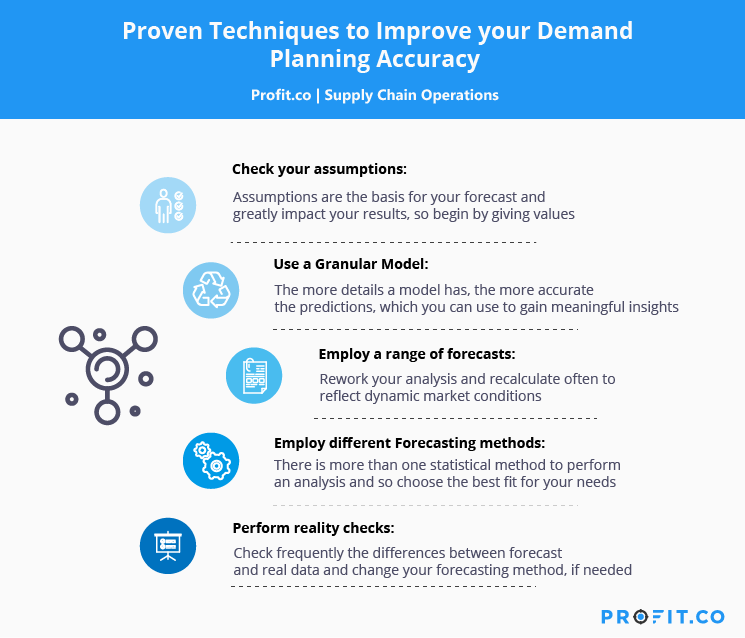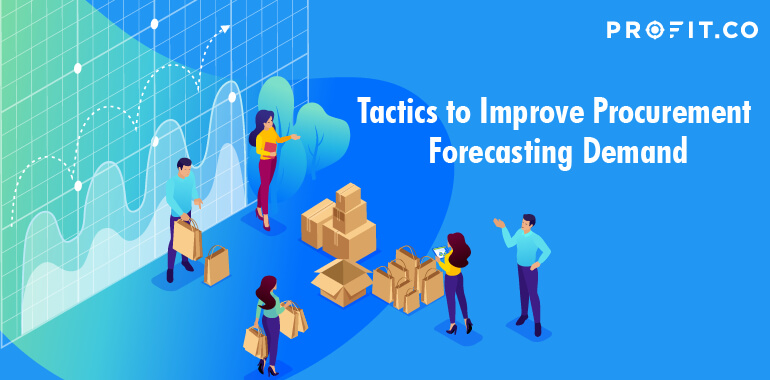Supply Chain Operations
To produce anything, including services, you’ll need raw materials and equipment. The process through which you acquire these needs is your supply chain. Now, supply chain operations goes beyond simply buying raw materials, it involves:
- Figuring out what you need, when you need it, how much you currently need or will need in the future
- How long your current stock will last, and when you should begin to make a new batch
- How long it will take the needed materials to get to you, how far in advance you should place an order
- Who offers the highest quality of what you need, what is the cheapest possible price, and if there any suitable alternatives
Phase 1: Procurement
The first phase of supply chain operations, which is Procurement, is the actual buying of raw materials from suppliers.
Procurement in business involves making buying decisions on the instances of scarcity to ensure the purchaser receives goods, services, or work at the most reasonably fair offer when factors such as quality, quantity, time, and location are compared.
So, how can the procurement process be improved? One technique to improve procurement is forecasting demand.
Forecasting Demand To Plan Future Operations
Imagine never running out of stock and always being able to complete orders. This is possible in two ways, the first of which is having a magic crystal ball that shows you the future, the second, is what’s called demand planning, and thankfully, it doesn’t involve magic.
Demand planning is the act of forecasting future sales and future needs for input such as raw materials. When you can predict the future demand for your product within a reasonable degree, you can then plan ahead to ensure you never run out of stock or run out of materials required to manufacture your product.
Being able to forecast future demand for your product also grants you the ability to forecast your future need for raw materials. If you crunch the relevant data and discover an annual increase in the demand for your product around the Christmas period, then it makes sense for you to order twice as many raw materials for the said period. Demand planning gives you the ability to ensure that your inventory is always up to par and you’re never left wanting. This in turn gives you a good reputation with your customers as they’ll come to trust your capacity to meet their needs. Demand forecasting also helps you to analyze risks and uncover new opportunities.
If you’re going to forecast, you must do it right, as the cost of inaccurate forecasting can be significant, ranging from loss of credibility to wasted resources. To ensure accuracy and avoid such losses, be sure to forecast demand by using relevant software packages.
Here are a few tips to help you plan demand efficiently:
1. See the big picture
Demand forecasting is not an independent operation; it has anchors within sales, operations, marketing, finance, etc. So, before you begin to forecast, ensure you have the big picture that encompasses everything that either influences demand or influences your ability to meet demand. Create a business plan that cuts across the sections and subsections to ensure that everything is as it should be, any omissions or errors may lead to skewed results and you may not notice it until your profits do. Also ensure that these different departments of your business work well together, the numbers and statistics are only a part of it, active collaboration between relevant parties is just as important.
2. Decide how you plan to segment your forecast models
You might want to create one model for demand across all locations and all product sizes and other specifications, but it may make more sense to have more specific independent models for consumers in cities, states, or even consumers in different countries perhaps. Decide beforehand what level you intend to forecast at, these decisions should be tailored to your business’s needs and or limitations.
3. Find the right software
As with all other things, you have to find the software that suits your specific needs. Software is a thousand times more effective, convenient, and faster than any human. It can collect, calculate, and analyze massive data sets instantaneously. There are demand planning tools created just for this purpose, explore your options, and select the one that best suits your needs.
4. Educate your staff
Not everyone within your organization may understand the workings or even the importance of demand planning. As we said earlier, demand planning is anchored in a few other departments and as a result of this, it collects data from several sources. Educate your employees on the importance of entering correct data and the importance of demand planning in general. Ensure that your workforce is conversant with the process and that those who utilize the software are well versed in how it works, and that everyone is willing to learn and develop.
5. Utilize forecast error
Remember that no crystal ball tells the future, forecasting is simply a really good guess, it won’t give you exact results, it’s just designed to get you close enough. Check for the disparity between forecast sales and actual sales to determine the accuracy of your forecasts. That disparity or error in the statistics is very useful and you can get it by computing the Demand Forecast Accuracy KPI, which is the difference (in units or weight) between forecasted and actual demand for a certain product or material divided by the forecasted demand over the same period of time, as a percentage. You can use it to determine an appropriate safety stock target as there will always be some unforeseen events that can either pull demand up or drag it down. This can help to ensure you always have a healthy quantity of stock available in the inventory at all times.
6. Remember that forecasting is just one part of demand planning
Forecasting is an important but not the only part of demand planning that matters. After forecasting demand, you still have to decide what to do with that data and how to respond to it.
7. Assess, Reassess and Improve
There is and will always be room for improvement, some method or technique will always exist that can improve your demand planning process, your job is to find it and implement it. Constantly analyze the effects and efficiency of your demand planning operation, is it good? Can it be better? How can it be better? These are the questions you should seek to answer if you want to maintain a high level of efficiency.
Useful KPIs to Consider
You can assess your demand planning operation by computing and analyzing KPIs such as Materials Availability,
Another one is the Carrying Cost of Inventory, which is the total expense required to warehouse and ship the inventory of a specific product or material over a certain period of time. Carrying cost of inventory includes warehouse labor, insurance, tax, storage, depreciation and shipping or freight expenses.
Then the Carrying Cost of Inventory as a Percentage of Sales, which is the total expense (includes warehouse labor, insurance, tax, storage, depreciation and shipping or freight expenses) required to warehouse and ship the inventory of a specific product or material divided by the total sales generated for the same product or material over the same period of time, as a percentage.
We also have the Carrying Cost of Inventory as a Percentage of Total Inventory Value, which is the total expense (includes warehouse labor, insurance, tax, storage, depreciation and shipping or freight expenses) required to warehouse and ship the inventory of a specific product or material divided by the total dollar value of inventory of the same product or material over the same period of time, as a percentage.
Proven Techniques to Improve your Demand Planning Accuracy

- Checking your assumptions: As with most statistical analysis, assumptions have to be made before forecasting even begins. Values have to be given to represent certain important elements such as the number of buyers, the frequency of their purchases, and the likelihood of them buying from you. These assumptions are the basis for your forecast and greatly impact your results.
- Using a Granular Model: This simply means employing a model with a sufficient level of detail and data. The more details a model has, the more accurate the predictions. A granular model can give insight into certain possibilities like when consumers will make orders, the optimal price level for your product, and reveal the subtlest differences between different locations.
- Employ a range of forecasts: By producing a range of forecasts you can easily rework your analysis and recalculate often to reflect changing market conditions and assumptions.
- Employ different Forecasting methods: There is usually more than one statistical method to perform an analysis. Employ several until you find the one that works best for you. Perhaps you can compare the analysis to your actual sales data to compare which is the most realistic method of them all.
- Perform reality checks: You should frequently compare forecast data to actual data to measure the disparity between the two. If the difference is significant or seems to be increasing, you may need to adjust your forecast methods. You need to do this often to keep the forecasts in check and catch any errors quickly before they lead to significant losses.
Final Thoughts
Forecasting demand can optimize your supply chain operations and help your business improve the procurement process. Using KPIs like these ones, and employing the techniques listed above to help you find ways to better manage your operations is the key to improving your organization as a whole. For more information on Supply Chain Operations, don’t forget to visit the Profit.co blog; and for a better way to focus, measure, and achieve your organization’s most important goals, check out our product page and book a free demo to learn about Profit.co and OKRs!
